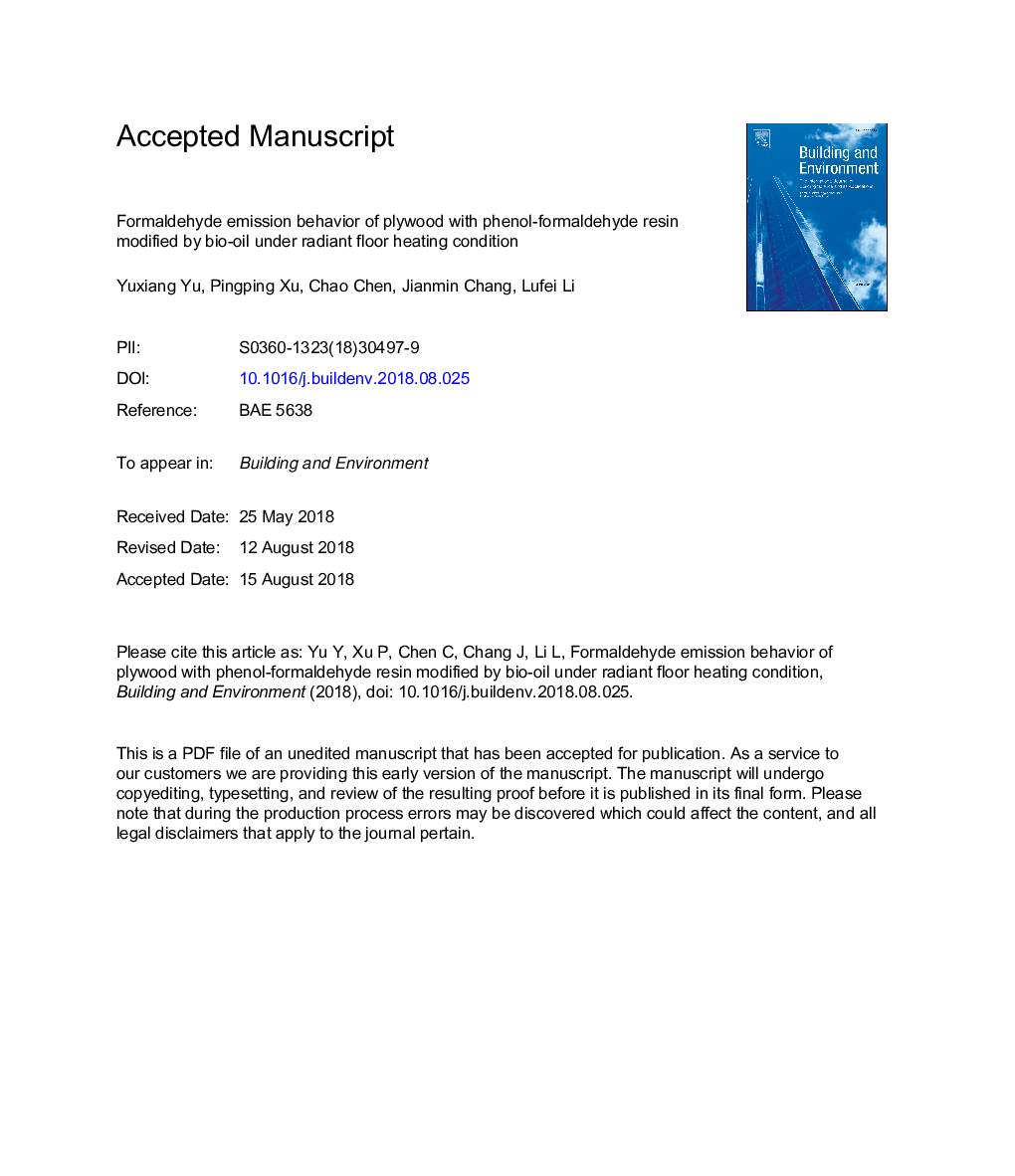| Article ID | Journal | Published Year | Pages | File Type |
|---|---|---|---|---|
| 11000976 | Building and Environment | 2018 | 27 Pages |
Abstract
Bio-oil was added as a substitute of phenol for phenol-formaldehyde (PF) resin to reduce the cost and formaldehyde emission (FE) in radiant floor heating system. The effects of substitute rate of bio-oil to phenol, temperature and heating time of radiant floor heating system on the FE of plywood with bio-oil phenol-formaldehyde (BPF) resin were examined using desiccator method. The variations on chemical structure of cured BPF resin were analyzed by the Fourier transform infrared spectroscopy (FT-IR) and solid-state nuclear magnetic resonance (NMR) to understand the FE behavior of plywood. Results showed that the FE of plywood was increased at prolonged heating time and the temperature significantly affected FE of plywood; the initial FE value at 50â¯Â°C was 20-30 times as higher as that at 20â¯Â°C. Elevated temperature increased the final equilibrium FE value and shortened the time to reach the balance. However, adding bio-oil reduced the initial and final equilibrium FE values, decreasing by 12-49% and 25-51%, respectively. Analytical results revealed that the initial FE was mainly from the residual formaldehyde from the manufacturing of plywood and the subsequent FE released owing to the breakage of C-O-C and CH2 bonds in resin.
Related Topics
Physical Sciences and Engineering
Energy
Renewable Energy, Sustainability and the Environment
Authors
Yuxiang Yu, Pingping Xu, Chao Chen, Jianmin Chang, Lufei Li,
